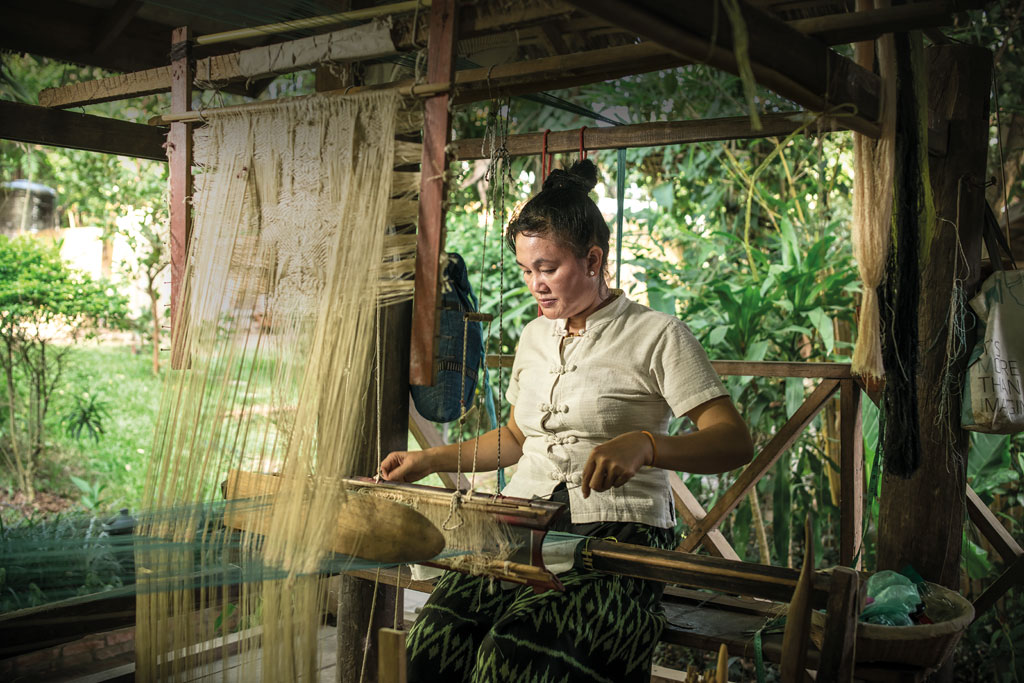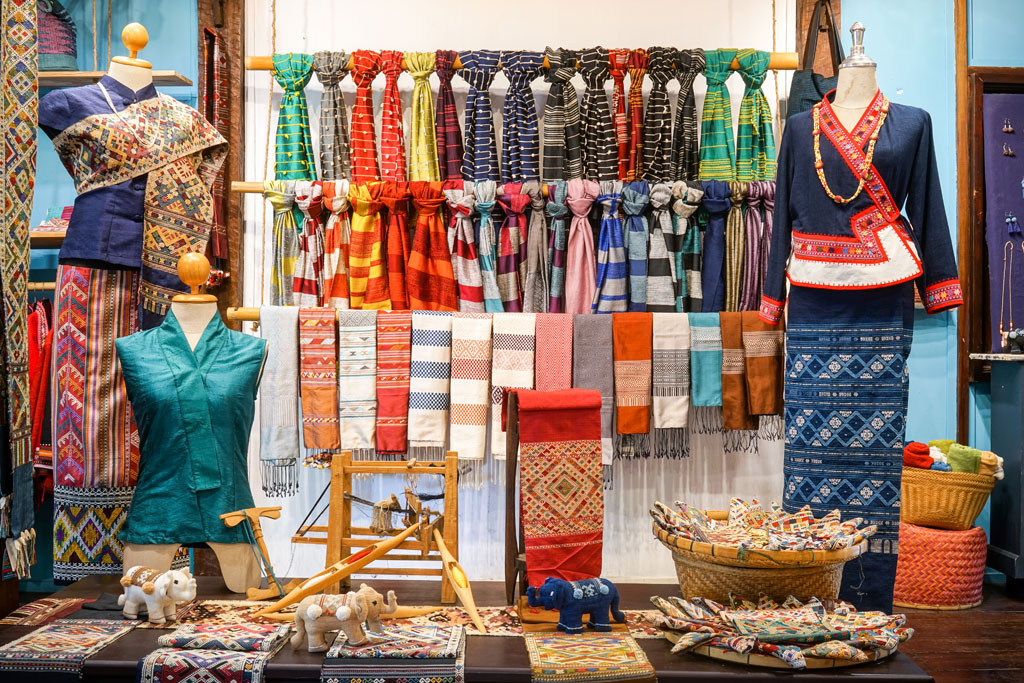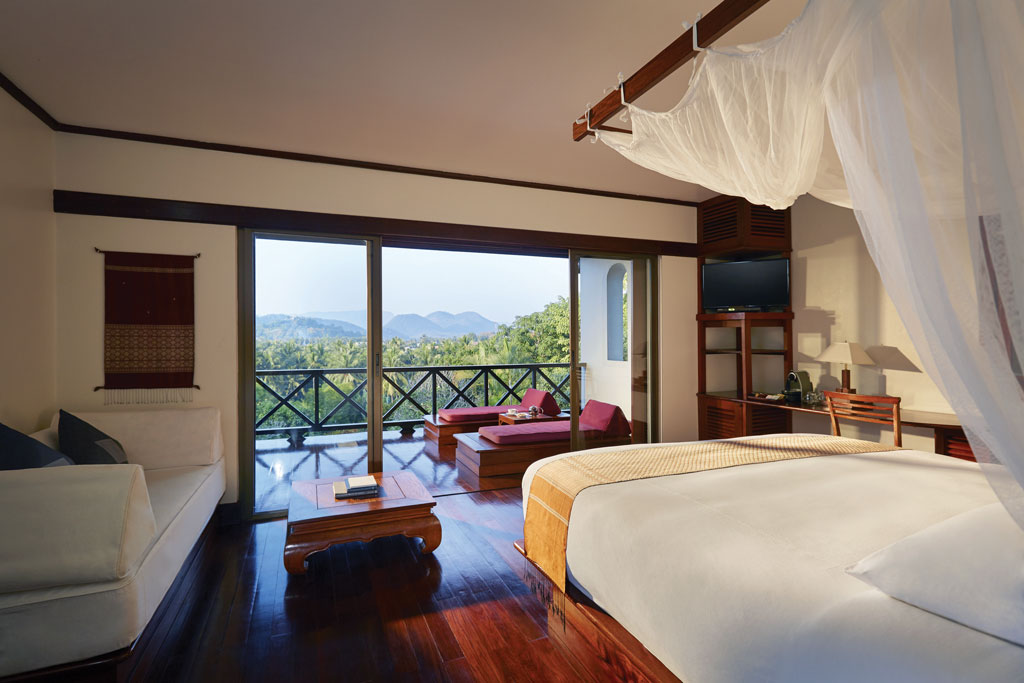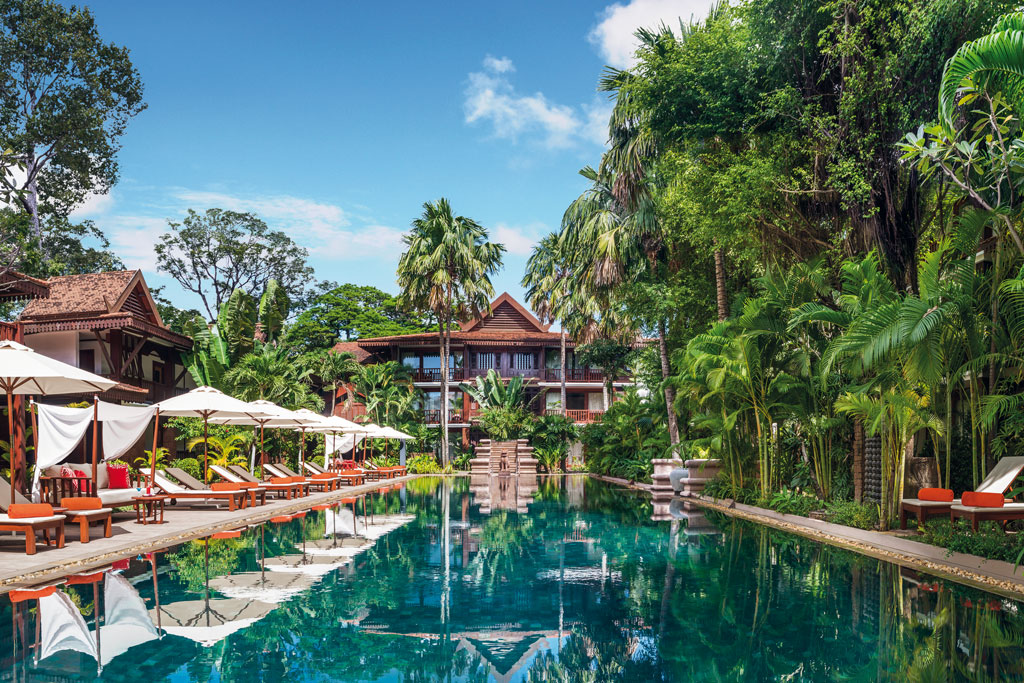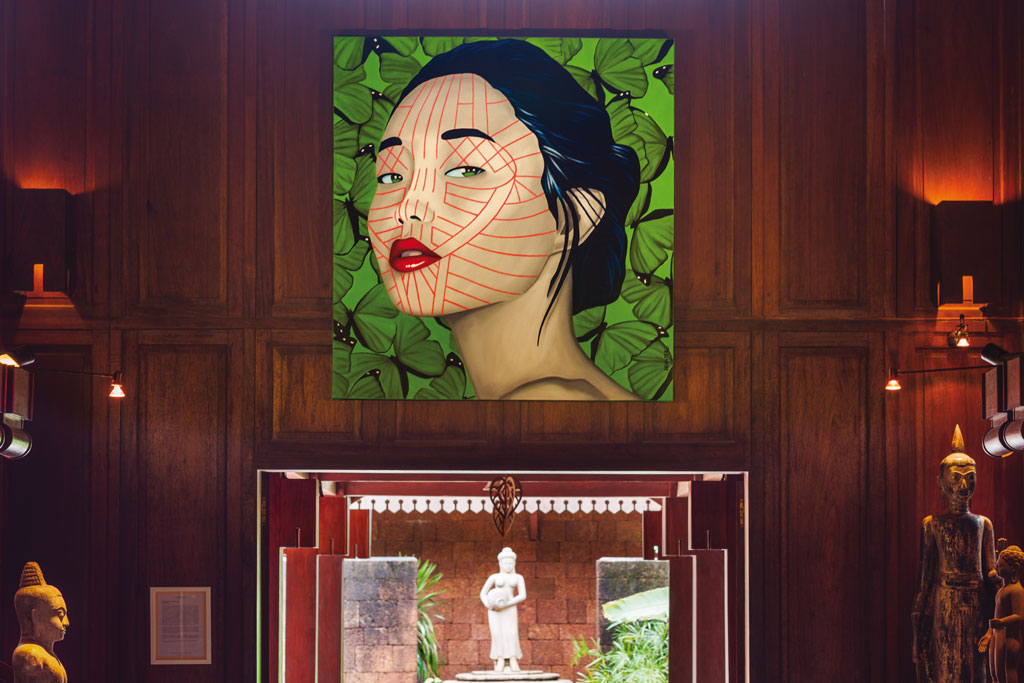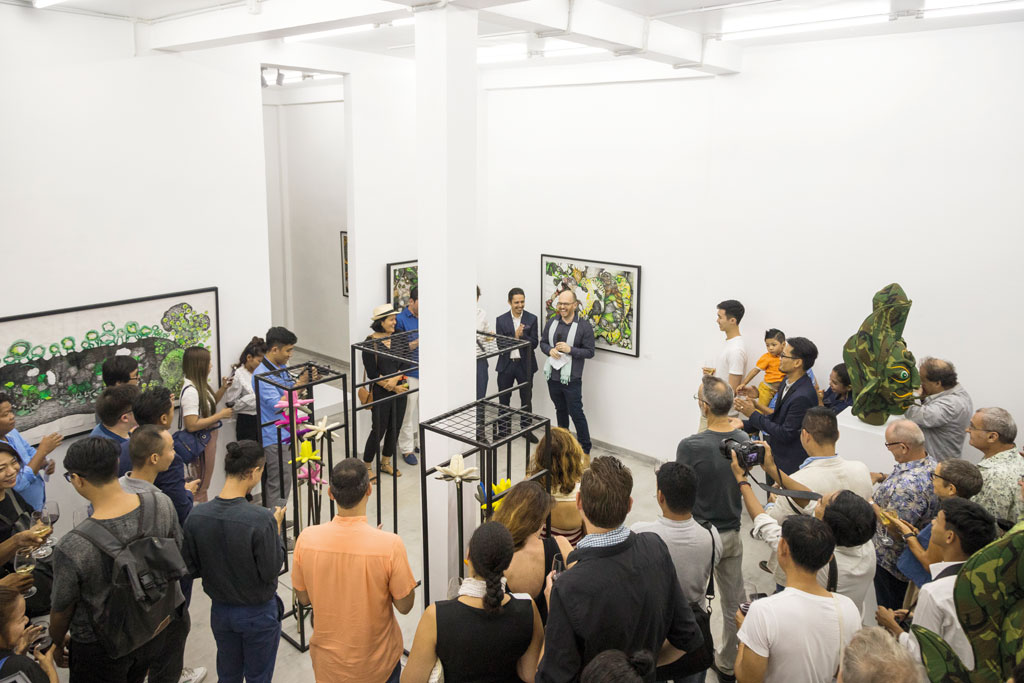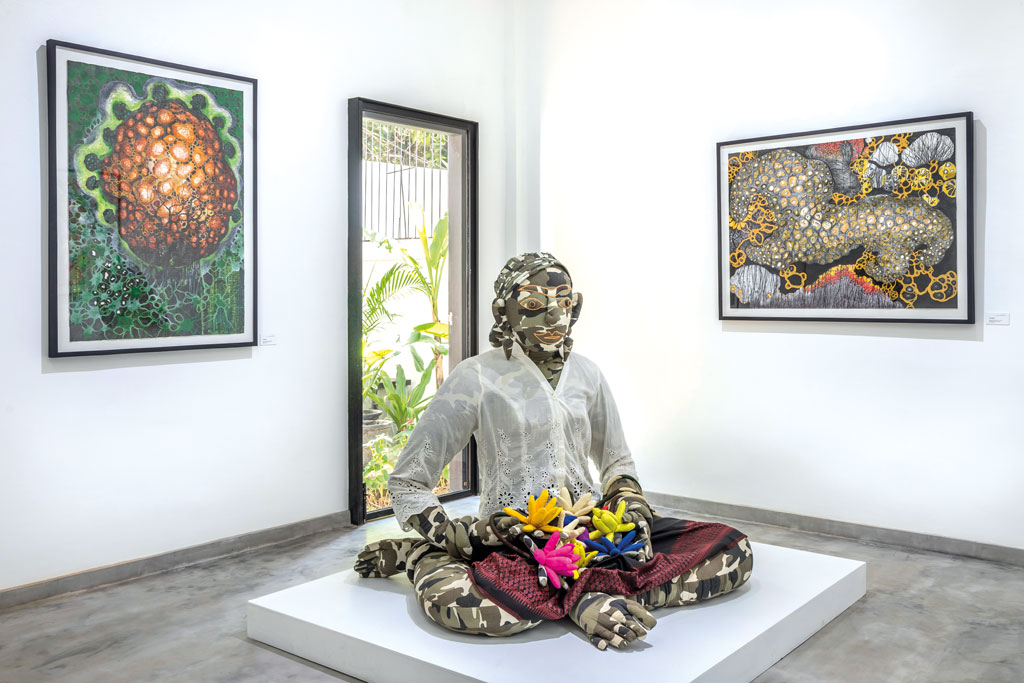Art of Revival: The C&TH Guide to Cambodia & Laos
A South East Asian excursion, enriched with creativity
This post may contain affiliate links. Learn more
Caiti Grove learns traditional textile techniques in Laos, and discovers a creative renaissance in Cambodia…
Breaking up a sappan tree is hard work. I position the machete’s curve close to the edge of the timber and then hammer the side with a block of harder, darker ebony. Just as it’s becoming addictive – voilà – a bit breaks off. Success is sweet.
This is Ock Pop Tok, a social enterprise in Luang Prabang, Laos, where women learn traditional textile craft skills and visitors get a few hours’ training in handicrafts. Set up in 2000 by Englishwoman Joanna Smith and Laotian Veomanee Douangdala, they now employ 78 women to make rugs, clothes and furnishings.
Behind me, a line of aluminium pots bubble with water, not for cooking but dyeing, as each cooks a single ingredient to create a different colour. One is waiting for the shards of wood to turn the water plum and, with it, napkins and silk table runners. Lemongrass is for light yellow, boiled teak makes pink and jackfruit a golden yellow. In a bowl, pummelled indigo leaves turn the fabrics to turquoise. The same leaves are fermented in a vat for a week, producing navy.
The room we’re working in is open on three sides, the roof held up by entire tree trunks. To the right, in a little garden strung with washing lines, my group hangs their finished work to dry, before retreating to a treehouse to eat spicy green papaya salad. Before us, the Mekong river slips past and fishermen in conical-shaped hats wait patiently in narrow long-tail boats for their next catch.
Downriver, the Kuang Si Falls cascade into pools, where visitors swim in crystal waters overhung by trailing trees. Nearby, little moon bears play in a fenced compound – the size and temperament of a group of three-year-olds, they scramble around on a huge wooden climbing frame. On the ground, six-foot-tall adult bears lounge star-shaped, their bellies to the sky.
Up in the mountains, guests at Belmond La Résidence Phou Vao are relaxing – much like the bears – next to the forest-backed pool. The décor here is Jay Gatsby meets Marguerite Duras – a French colonial wilderness of white-washed walls, wooden shutters, dark rosewood furniture and swirling teak fans. Palm trees and enormous lobster claw plants (heliconia rostrata) surround the poolside restaurant, which serves French cuisine with Laotian details (lighter flavours than Gallic cooking, with much more spice and colour – delicious).
Monks in Luang Prabang have to wait for the dawn echo of the gong before collecting their food alms. Committed to the religious life as young as six, they’re barefoot and swathed in orange robes as they file under the temple’s golden stupa arch to meet the village faithful, shoes set aside, who wait with containers of freshly-cooked sticky rice that they place in metal bowls hung from the monks’ necks.
Cicadas and crickets purr in the trees as the day warms. There’s even a little rice paddy field where hotel guests can don traditional blue outfits – smart crossover jackets and those conical hats. Barefoot in the squelchy mud (easier than wellies), we plant new seeds and replant developed ones, crushing the husks of harvested grain in a big wooden mill.
Just a 90-minute plane ride south, Siem Reap is home to Cambodia’s crown jewel, Angkor Wat. The largest shrine in the world, it was built as a Hindu temple to the god Vishnu but became Buddhist post-conquest, at the end of the 12th century. Around it, the city bustles with reckless Vespas, often loaded with children or live chickens in baskets, while open vans rattle with bottles destined for a bar. On the banks of the Siem Reap River, Belmond La Résidence d’Angkor is a shady nook of draped bougainvillea and palm trees that soar up to first-floor teak terraces.
Cream canvas umbrellas surround a saltwater swimming pool that’s fringed with frangipani flowers and blissed-out tourists – who find themselves endlessly postponing their temple-visiting plans until tomorrow. In the teak bar guests drink Kampot Pepper Martinis under the gaze of portraits by local artist Christian Develter. Inspired by the facial tattoos of Chin women from Myanmar, their glassy skin is etched with pink, or with white lines over a blue complexion.
Last December, Yves Zlotowski and Lyvann Loeuk opened Batia Sarem here, the Cambodian outpost of two contemporary art galleries in Saint Germain des Prés, Paris – a well-heeled area where seven-euro coffees are standard and the church fête raffle receives a Louis Vuitton handbag every year. Chickens on motorbikes aside, does Siem Reap share similarities with its Parisian counterpart?
‘It is open to the world,’ Yves tells me. ‘The city has a special atmosphere. It is green, not too busy and laid-back.’ These white gallery walls might feel uncharted territory, but they’re fed by the city’s culture. ‘We want more Cambodians to visit and hear reactions to their contemporary artists,’ he says.
Across town, artist Lim Muy Theam also promotes Cambodian culture, but with traditional crafts and long-lost skills. Having fled the country as a child, following the terror of the Khmer Rouge regime and Vietnam’s 1978 invasion, he arrived in France in 1980, aged 11, and went on to study painting at the Fine Art School in Paris. On return to his native Cambodia, Lim visited temples and private homes to find hidden ceramics and squirrelled-away art – bits of buried history that the Khmer Rouge had neglected to destroy. He’s filled Theam House with his finds, using them to educate both visitors and locals, and now trains artisan apprentices to create lacquer work and carved wooden sculptures that are sold from his shop.
Galleries like these will help rebuild Cambodia’s artistic heritage, almost deleted during the decades of war. Both here and in Laos, artists and craftsmen want to relearn the skills of the past as well as embrace new techniques and outlooks for the future. They are poised to bloom – and every visitor should witness this brave creative renaissance.
Cox & Kings offers a ten-night trip to Cambodia and Laos from £3,395 per person (based on two people sharing). The trip includes flights, transfers, guiding and some meals. coxandkings.co.uk
The trip includes three nights at Belmond La Résidence d’Angkor and three nights at Belmond La Résidence Phou Vao, both on a B&B basis. belmond.com
READ MORE
Top Travel Trends 2019 | The Weekender: Cartagena | Micro Trips: The 2019 Travel Trend to Know Now

